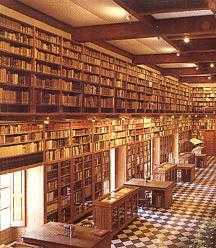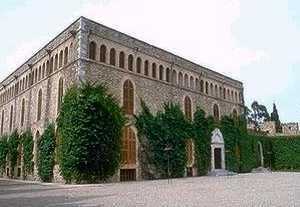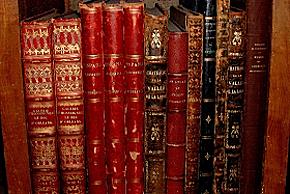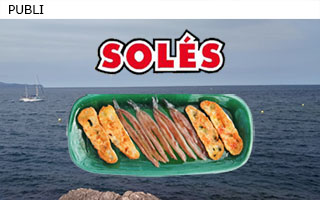Peralada’s Castle Library

Peralada is not only a place for amusement or leisure activities with its Casino and golf course; it is also the site of a former Carmelite monastery, a place of culture and silence. There is the castle museum, a wine museum, the church and one of the most important and most valuable private libraries in the world.
At this time, we will concentrate on the library. The library in Peralada was created during the earl (count?) past of the place. It is in the Carmelite monastery from the XIV century, where once the monk cells and the main dwelling of the abbot had its place.
In the 19 Century, the castle and the monastery became the possession of the Rocaberti family. Antoni de Rocaberti, count of Zavella, and Tomas de Rocaberti, count of Peralada and up to then Spanish Ambassador in Paris, commenced to live permanently in Peralada and created the library in the year 1888. They also maintained a school for theatres and music. This wonderful epoch ended too soon, however with the death of the two brothers at the end of the nineteenth century. The two brothers did not leave descendants.
Until in the year 1923, the possession remained without owners and seemed on the verge of disappearing, until Miquel Mateu took over the entire complex in the year 1923. He immediately undertook complex restoration work, which gave the population of the village work. And, he began to address the continuity of the library. At that time, the collection consisted of about 20,000 volumes. Today over 80.000 books can be seen, many of inestimable importance. Mateu was a passionate collector; whenever he attended an official meal, he was certain to take a menu card and archive it in the library. Mateu developed a particularly significant passion to collect examples of “Don Quichote ” by the national poet Miguel de Cervantes. Over 1000 “Don Quichotes” are included in the treasures of the library, in many languages and from distant counties, such as the former Russia.
The archivist Martí Costa supported Mateu. This simple man from the village worked hard to assimilate the knowledge of library science techniques and led the archives till the year 1985 as an autodidact.
 The library is in the southeast part of the monastery; two halls are dedicated to the library, two serve as archives.
The library is in the southeast part of the monastery; two halls are dedicated to the library, two serve as archives.
The selections in the accessible public library include books on varying topics such as history, art and customs, and also according to their value and rarity. Some types of books have been omitted, without prejudice, such as Bibles, books concerning music or books for children.
Among the most valuable volumes within the library include approximately 200 titles from the beginning of the typography in the 15century. We remember, the history of the art of printing began approximately in the year 1455 in Mainz, Germany: Johannes, son of the Patrician Friele Gensfleisch, because of his house called “von Guttenberg“, invented the printing press with moveable type characters. After Mainz, other “firsts” were Italy, which published its first works with moveable type in the year 1463, France in 1470, and Spain (Valencia) in the year 1473. The library of Peralada contains ancient works from the 15th century, which were manufactured in Basel, Venice, Rom, Florenz, Neapel, Nuernberg, Augsburg, Cologne, Paris, Lyon and Ulm.
 The oldest existing book carries the title “Sermons de Robertus Caracciolus” and was printed by Francisco de Formis in the year 1472 in Venice. The topics of these works are usually of a religious nature: “Malleus Maleficarum” by Erich Institor, Nuernberg 1494-97, “Practica” of Joannis Miquel Savonarola, Venice 1497. And, the famous “Cosmographie” of Claudio Ptolemee from the year 1492, one of the most complex illustrated books of the library, with maps of the known world, which, at the time, was unaware of the existence of the “new world,” the Americas and Australia and the North and South pole continents. Also of interest is the “Tiber Chronicarum” printed of Hartmann Schedel 1493 in Nuernberg, which fascinates us with copper passes and its format.
The oldest existing book carries the title “Sermons de Robertus Caracciolus” and was printed by Francisco de Formis in the year 1472 in Venice. The topics of these works are usually of a religious nature: “Malleus Maleficarum” by Erich Institor, Nuernberg 1494-97, “Practica” of Joannis Miquel Savonarola, Venice 1497. And, the famous “Cosmographie” of Claudio Ptolemee from the year 1492, one of the most complex illustrated books of the library, with maps of the known world, which, at the time, was unaware of the existence of the “new world,” the Americas and Australia and the North and South pole continents. Also of interest is the “Tiber Chronicarum” printed of Hartmann Schedel 1493 in Nuernberg, which fascinates us with copper passes and its format.
Another component of the library are 1300 manuscripts, 800 of it are concerned with the aristocracy: Family trees, contracts, tax exemptions; all together of inestimable value for the historiography. They often are on parchment; in addition, bind already on paper, drawn up in leathers or cloth. We find here represented the most important families of the Catalan aristocracy; the oldest manuscript was assigned to the family Mayoras by king Juan of Castilia in the year 1460.
A complete enumerating of the library would exceed the capacity of our systems, but we would be remiss if we did not mention the section of the books once forbidden by the official censors. For example the defaming book of queen Marie Antoinette with the title “Essais historiques sur la vie de Marie Marie-Antoinette d’Autriche, reine de France ” (historical studies of the life of Marie Antoinette of Austria, queen of France), published (probably) in London in the year 1789. Probably? Often books, whose contents were controversial, either religious or likely to displease the community leaders, were printed with intentional errors, in order to arouse suspicion that the books were printed abroad..
The censored books concern themselves with various other topics: Literature, as for instance the fables of La Fontaine, religious works with heretical contents and anatomical illustrations, which were judged as being obscene.
The library in Peralada does not only show us books from all four corners of Europe, it reminds us also of our cultural roots; and they show to the bibliophile an impression of beauty and dignity.
We recommend to our readers, without reservation a visit in Peralada. We particularly urge attendance by children and young people. We must continue to use this library to show that there is beauty and culture and knowledge that cannot be garnered from television or other popular communication methods.
[cetsEmbedGmap src=http://maps.google.es/maps?f=q&source=s_q&hl=es&geocode=&q=castell+de+peralada+girona&sll=41.478747,2.176666&sspn=0.214005,0.370789&ie=UTF8&hq=&hnear=Castell+de+Peralada,+C%2F+SANT+JOAN,+S%2FN,+17491+PERALADA,+GIRONA&ll=42.306261,3.011627&spn=0.211251,0.370789&t=p&z=11 width=350 height=425 marginwidth=0 marginheight=0 frameborder=0 scrolling=no]

